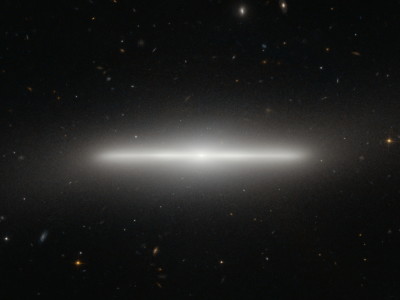A fierce man appears who created an ultra-high resolution moon photo by stitching together about 50,000 photos
A thread was set up on the overseas bulletin board Reddit, saying, 'I took about 50,000 pictures of the night sky and made an image of the moon with 81 megapixels (81 million pixels)!' The photos are so beautiful that there are many compliments such as 'one of the best pictures of the moon I've ever seen!' And 'the best quality pictures I've ever seen!'.
I took nearly 50,000 images of the night sky to make an 81 Megapixel image of Tuesday's moon. Uncompressed image linked in the comments. [OC]: space
It was ajamesmccarthy who stitched together 50,000 photos to create one beautiful moon photo. If there is a compliment that 'it is a photo that inspires both space lovers and photographers!', There is even a compliment that 'I am neither of them, but I was greatly influenced!', And many users are ajamesmccarthy. I am captivated by the photos I made.
The following picture is a picture of the moon taken by ajamesmccarthy. The original data is 9000 pixels on each side, but the photos in the article are reduced to an appropriate size.
If you want the original image data created by ajamesmccarthy, you can download it from the following. If you have difficulty downloading from the 'original data', try downloading from the 'cache data' or 'Torrent file'.
・
・Cache data
・Torrent file
Users say, 'How did you plan to make this photo? I understand if you take 100 photos, but 50,000 is an order of magnitude more than 10 times that. It's a number. If you can share the shooting method, please do not hesitate to contact me. 'And' Why are you synthesizing 50,000 photos? I think that 3000 photos are enough for resolution ... Many questions are asked, such as '...?', Asking how they created the picture of the moon.
There was no response from ajamesmccarthy himself because there were too many comments, but another user, brent1123, who is familiar with astrophotography, shared his knowledge and asked, 'How did you create a beautiful astrophotography?' And 'Why?' Do you need to combine as many as 50,000 photos? '
To create beautiful astrophotography like ajamesmccarthy, brent1123 says, 'high-speed capture camera' and 'tens of thousands of photos so that details such as craters on the moon are not blurred due to the influence of the atmosphere. He points out that it is necessary to use 'software that captures, extracts the clearest frames using a special program, and synthesizes to reduce noise.'
by
In more detail, the camera used was the ASI224MC , a color camera for astronomical photography that can be purchased for $ 249 (about 28,000 yen), and this camera uses a sensor that is relatively similar to a normal single-lens reflex camera. However, it is explained that it is possible to shoot tens to hundreds of frames per second depending on the resolution used.
In addition, it seems that all the software used for shooting, noise removal, and compositing is free, using the free software ' FireCapture ' to take pictures with the ASI224MC without a viewfinder, images Brent1123 points out that ' AutoStakkert! 2 ' is used for processing, and ' RegiStax ' or Photoshop is used for other fine adjustments.
When shooting the moon, there are refractions of the atmosphere and light between the moon and the camera, so it seems that there are cases where details such as craters on the moon cannot be captured in detail. Therefore, a technique called 'lucky imaging' is used, in which a large number of photographs are taken, and the sharp ones are selected and combined to create a fine photograph. That's why the creator, ajamesmccarthy, took 50,000 photos, and brent1123 says, '50,000 photos aren't that rare.'
In addition, you can reduce the noise in a photo by extracting only the beautiful parts from multiple photos and combining them. Pictures taken with the camera will have some random noise, which is more noticeable when taking dark pictures. Astrophotography inevitably causes a lot of noise due to the nature of shooting stars floating in the dark, so it is very important to combine multiple images to reduce noise and improve fineness. In the case of random noise, it seems that you can remove the noise cleanly by using about 40 photos, and Mr. blend1123 said, 'If you use 50,000 photos, the random noise will be reduced to a very small level.' I'm pointing out. However, when synthesizing astrophotography using photographs taken with a very short exposure time, I presume that the reason for synthesizing multiple photographs should be 'eliminating atmospheric blur.'
On the contrary, even if the exposure time is increased, random noise will occur in the photo. In addition, long-exposure also generates heat-related noise from camera parts, so it is necessary to generate beautiful photos with less noise by superimposing and synthesizing multiple photos in the same way. brent1123 points out that there are many cases where free software called ' DeepSkyStacker ' is used when synthesizing photos taken with long exposure, and in addition, when shooting celestial bodies with long exposure, 'night sky I advise you to need a tracking mount to 'move the camera as it moves'.
In addition, Brent1123 has taken the following lunar surface photographs using about 100,000 photographs in the past.
Half-Moon Lunar Mosaic [11,000 x 8,000] (brent1123)-Maximum resolution | AstroBin
Related Posts:
in Art, Posted by logu_ii







